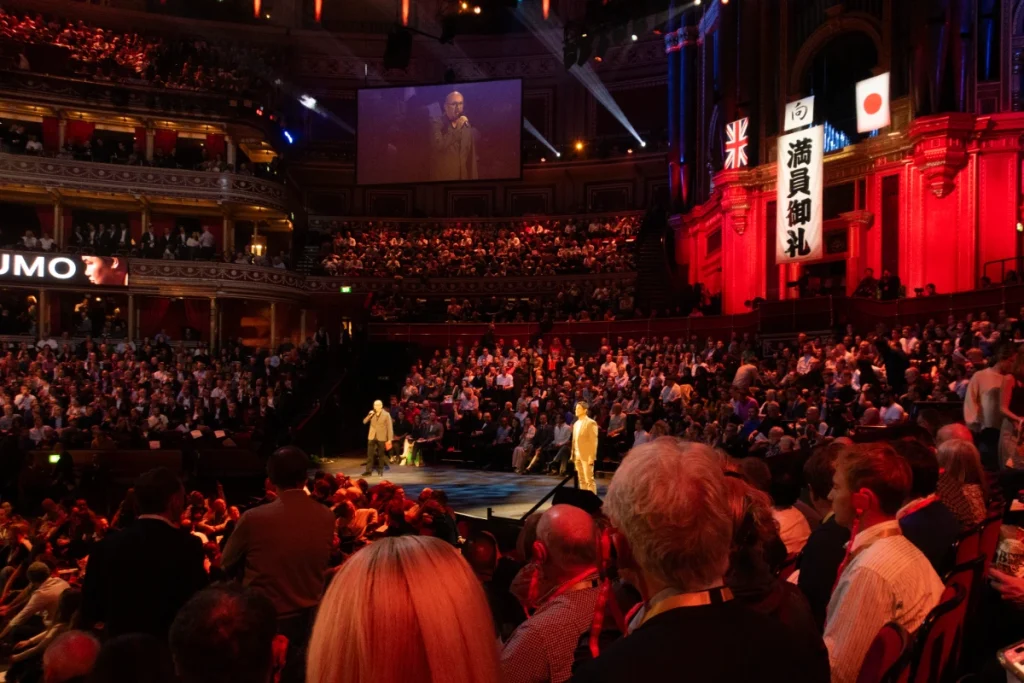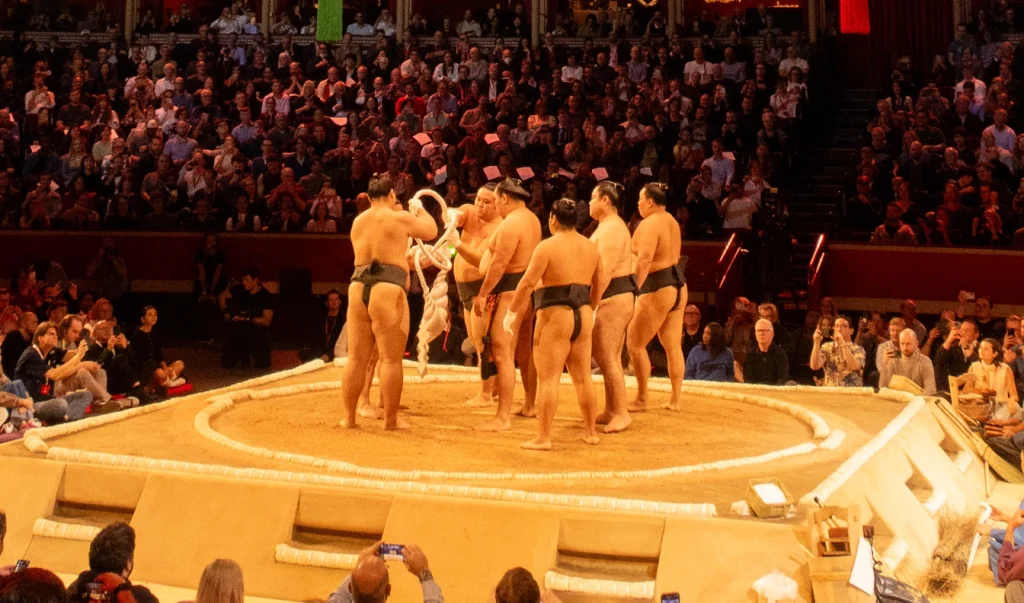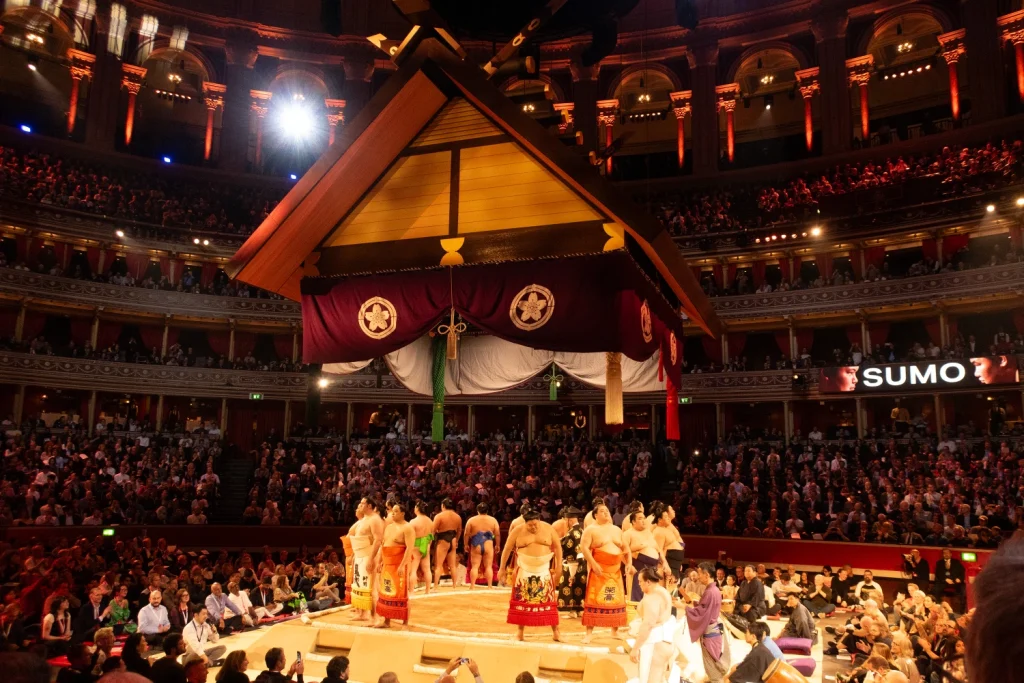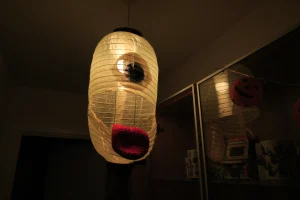Sumo is back in the UK for the first time in 34 years, and what better way to get ready for the exciting Grand Sumo Tournament than by learning some key sumo terminology? The tournament runs over five days and wraps up on Sunday, October 19, 2025, at London’s Royal Albert Hall. Whether you’re new to sumo or just want to brush up on your knowledge, this guide will help you understand important terms like yokozuna, rikishi, dohyo, and tsuriyane. Knowing these words will make watching the matches even more enjoyable and give you a deeper appreciation of sumo’s rich traditions and unique culture. This easy-to-follow sumo glossary is the perfect starting point for fans of all levels.

Maninonrei – 満員御礼 – Sell-out Crowd
Possibly not the first sumo terminology you would think of going, but it’s worth noting that all nights at the Royal Albert Hall are fully sold out, and so there is a large banner hanging out with the characters 満員御礼 indicating that the show is sold out. The characters here quite literally mean, まんいん = full of people and おんれい = thank you. This is typically used when the show is more than 95% sold out and is a way of the organizers thanking the audience. This word originally came from Sumo but we use for new movies, or theatre play and etc.
Rikishi – 力士 (りきし)
Rikishi is the term for a professional sumo wrestler. The word combines 力 (riki), meaning “power,” and 士 (shi), meaning “person” or “warrior”. Rikishi have a Shiko-na which has been given to them, making them Rikishi.
How are Sumo names decided? – Shiko-na – 四股名 (しこな)
The 四股名 (shikona) is a ring name given to wrestlers, usually by their stable master. It can be inspired by their hometown, powerful animals like tigers or dragons, or sometimes they keep their own name. Wrestlers who rise quickly through the ranks often keep their real name as their shikona.
Yokozuna – 横綱 (よこづな)
The top rank in sumo wrestling. The word 横 (yoko) means “horizontal,” and 綱 (zuna) means “rope.” This thick, braided rope is worn only by the highest-ranked wrestler, called the yokozuna, as a symbol of their status. Since the Edo period, there have been 75 wrestlers who reached this prestigious rank. The thick hemp rope which only a yokozuna is allowed to wear, is carefully hand-crafted by other wrestlers and symbolizes the yokozuna’s spiritual and physical strength

Shiko wo fumu – 四股を踏む(しこをふむ)
Shiko is evil spirits. Shiko wo fumu is the movement in which a sumo wrestler lifts one leg high and stamps on the ring. It is said to be a greeting to the gods and an act to drive away evil spirits from the ground.
Yoisho! – よいしょ
When the yokozuna stamps the ring, the crowd often shouts “よいしょ!” This word is also commonly used in everyday life when lifting something heavy or gathering strength to get up after being knocked down.
Tsuriyane – つり屋根 (つりやね)
This refers to the “hanging roof” (つり means “hanging,” and 屋根 means “roof”) over the sumo ring. It’s designed like a Shinto shrine roof to reflect sumo’s historic roots, as tournaments were held at shrines in the past. The pillars were removed from the shrine in 1952 to make it easier for the audience to see the action in the ring (dohyō)!

Dohyō – 土俵 (どひょう)
The 土俵 is the sacred sumo wrestling ring, made of packed clay and surrounded by rice straw bales. It’s about 4.55 meters wide and sits on a raised platform so everyone in the arena can see clearly. As mentioned above, this originally resembled a shrine, but the pillars on the edges have been removed. The ring is more than just where the wrestlers fight — it’s treated as holy ground.

